Selecting the correct draw length on your bow is important to ensure both precision and comfort. It is common to hear archers complaining of the lack of good fit which may cause frustration and low results. This guide will help to explain how to measure draw and find your draw length and how it can be used in the field.
In this post, we will clarify what archery draw length means, why it is essential, and how to determine it based on the types of bow. Further, to provide you best possible archery solution we will explore draw length and draw weight, the two most significant factors.
Whether you are a novice or an expert in using archery equipment, this article will help you to become knowledgeable about the best practices in shooting.
What Is the Draw Length For a Bow?
Draw length is the horizontal distance from the nock point to the bust line of the grip when the bow is fully drawn. In layman’s terms, it can be described as the length of your arm from your wrist to your fingertip when drawing the bowstring.
A correct draw length is crucial for several reasons.
- Accuracy: It helps position the archer’s bow, arrow, and eye correctly, thus improving accuracy.
- Comfort: Proper limb match heightens the comfort level and helps avoid any form of stress or fatigue that may be linked with archery exercise.
- Performance: It enhances the bow’s functionality as it enhances its speed and power.
- Safety: Incorrect draw length affects the posture and could cause injuries in the long run.
Bow string length measurement is used in the selection of bows and the adjustment of these bows to their best performance. It also ensures that one is not overdrawn or underdrawn with the bow, which can be painful and affect precision.
How To Find Your Draw Length For a Bow?
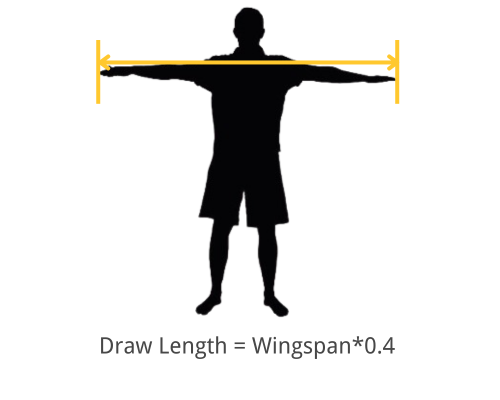
A common method to estimate draw length is:
- Measure your wingspan: Fully extend your arms out to the sides, parallel to the ground. The distance between your middle fingertips is your approximate wingspan. This measurement is often used as a starting point for estimating draw length, as there’s a general correlation between arm length and draw length. However, it’s essential to remember that this is just an estimate, and individual variations can be significant.
- Multiply your wingspan by 0.4. This number will give you a rough estimate of your draw length in inches. For example, if your wingspan is 68 inches, your estimated draw length would be 27.2 inches.
How to Get Accurate Draw Length Measurement?
If you want something that is even more accurate, these should be the choices to make.
Professional Archery Shop: Almost every archery shop I know of possesses equipment and personnel that can properly measure draw length.
DIY Method:
- Firstly, place yourself in such a way that your back is parallel to the wall.
- Raise your arms straight up to the sides, touching the wall with your middle fingertips.
- Measure the first mark to the second mark and then divide the result by two
- Add 1.75 inches to this measurement for a more accurate estimate.
Draw Length and Bow Types
The formula for estimating draw length is generally the same for all bow types. However, the actual draw length you need might vary slightly based on the bow’s design and your personal preferences.
Compound bows are often adjustable, allowing you to fine-tune the draw length to match your specific needs. Longbows and recurve bows have less flexibility in draw length adjustment.
It’s crucial to choose a bow that closely matches your draw length for optimal performance and comfort.
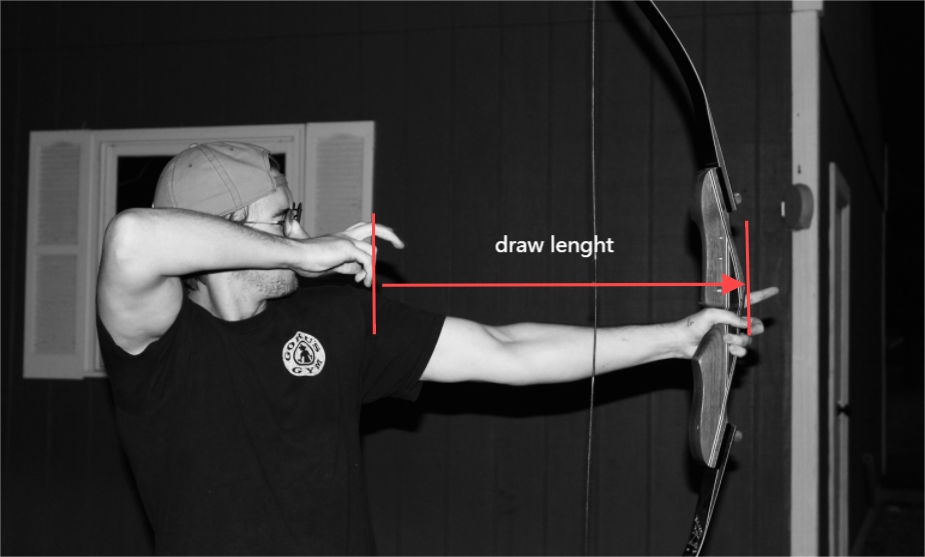
What Is The Relationship Between Draw Length and Draw Weight?
What Is Draw Weight?
Draw weight indicates the amount of force that will be necessary to pull the bowstring up to the full draw position.
It is expressed in pounds and is fundamental for performance and safety in archery. The preferred draw length used in calculating draw weight is 28 inches.
This means that a bow with a rating of 40 pounds pulls with forty pounds of force when drawn to 28 inches. However, draw length varies from one individual to another and this influences the real draw weight felt by the archer.
The draw weight increases with the draw length if it is beyond 28 inches and decreases if it is less than 28 inches.
Here is the relationship between draw length and draw weight:
- Draw length and draw weight are significant factors affecting an archer’s performance and safety during competitions.
- Draw weight is commonly measured when the bow is drawn back to a specific draw length of 28 inches. This means that a bow with a rating of 40 pounds will pull with forty pounds of force at a draw length of twenty-eight inches.
- This means that your actual draw weight will be higher depending on your draw length if your draw length is longer than 28 inches. On the other hand, if you have a short draw length, then the draw weight will also be low.
- It should be noted here that the changes in draw weight are not proportional. It differs based on the type of bow, whether it is recurve, compound, or longbow but as a rule of thumb, the variation is about 2-3 pounds per inch of difference in draw length.
How Does The Draw Length Affect The Weight?
A draw length that’s too long or too short can reduce the bow’s efficiency, affecting arrow speed and accuracy.
Also, an incorrect draw length can lead to discomfort, strain, and potential injuries. Thus, it is important to match your draw length to the bow’s design to ensure optimal performance and consistency.
How To Decide The Ideal Draw Length and Weight?
Effective draw length is critical in archery and hence requires a correct measurement. There are various techniques that can be used to get correct data.
Measure Your Draw Length:
1. Professional measurement
The most accurate method is a visit to an archery store. This is a unique parameter usually measured by trained professionals who have all the tools and expertise in that. It takes into account factors like your arm length, your torso length, and the flexibility of your shoulders to arrive at the best measurement.
2. Self-measurement techniques
Although not as accurate as professional measurement several techniques may be used to give an approximation.
One common approach involves measuring your wingspan (the distance between your outstretched fingertips) and dividing it by 2.5. Adding 1.75 inches to this result offers a rough approximation of your draw length.
However, it’s important to note that this method may not be accurate for everyone, as individual variations in body proportions exist.
3. Trial and error
This is a cyclic process where an attempt is made to determine the preferred draw length of a particular bow. It is time-consuming but can be beneficial in fine-tuning the draw length.
Determine Ideal Draw Weight:
- Strength and experience: For the new archers, therefore, it is advisable to shoot with less pull weight to develop strength and the correct technique.
- Target shooting vs. hunting: A target archer would like to have lighter weights when the arrow is drawn to have better control in his shots while a hunter would like to have heavier weights drawn for penetration.
- Comfort: This should be enough to allow you to hold the bow at full draw for several seconds without experiencing undue discomfort.
- Progression: When you build some level of strength and skill in pulling the string back, then the draw weight can be gradually put into practice.
Ideal Draw Length and Weight for Novice and Proficient Archers
For Beginners
Draw length: You should select an approximate draw length at the beginning and refine it as you advance.
Draw weight: For strength development and technique enhancement, draw weight should be at least 25 to 30 lbs lower than your maximum capacity.
For Experienced archers
Draw length: The measurement needs to be precise to achieve maximum results.
Draw weight: As for its power, it depends on the types of bow used by the archer aimed at shooting targets or hunting, and physical strength. Recurves are preferred for hunting and you can consider a 40-55 lbs draw weight as a skilled archer.
Beginning with an excessively heavy bow can make it very difficult to master the correct shooting form and technique. It is advised to begin with a lower draw weight and then raise it as your strength and skills improve.
Conclusion
It is crucial to establish the right draw length if one is to shoot accurately and comfortably while engaging in archery. In this way, archers can gain insight into the proper equipment adjustments regarding draw length and draw weight.
It is possible to estimate draw length; however, professional measurement is recommended for precision.
So you need to understand that when it comes to the draw length & weight then it is not a single recipe, it depends on your body measurements, type of bow, and lots of other aspects. Trial and consult with professionals who are into archery can guide you to the right equipment for your archery experience.
To improve your archery shooting skills, we recommend the Kalkal Archery Target Cube for practice.
https://www.kalkal-online.com/product/6-sided-foam-archery-target-cube-block/


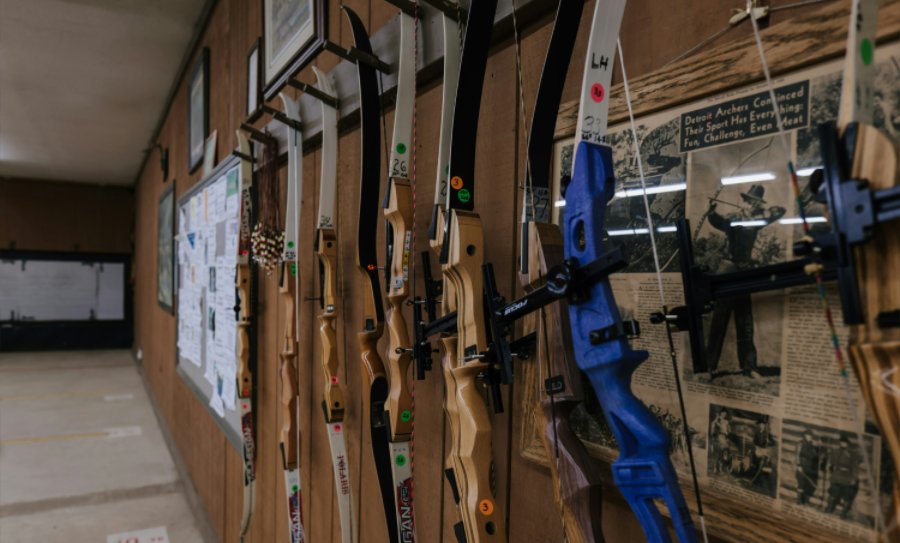




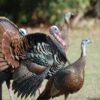

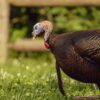










Leave a reply